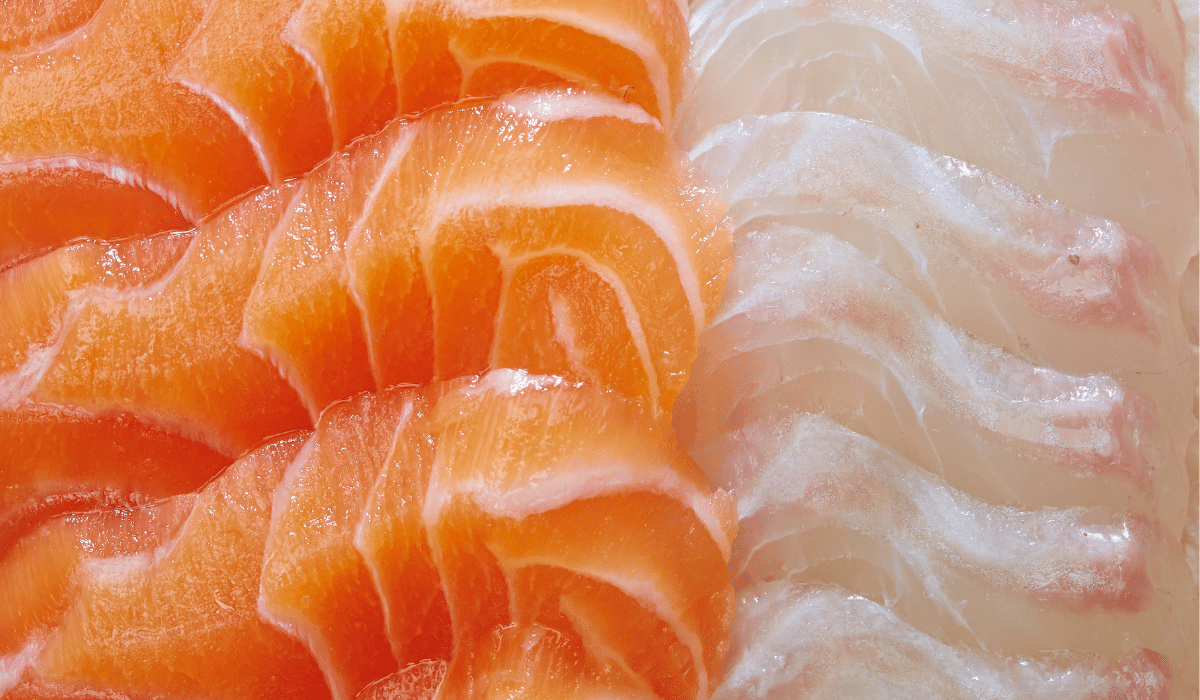Though sashimi and raw fish are both Japanese, they are still confused with each other.
Raw fish is used in sushi, right? (Yes, it can.) However, sashimi is also made from raw fish, so what makes one type better than the other? Although there are other differences between these two superstars of Japanese cuisine, the main difference between them is whether or not rice is used.
Sashimi
Sashimi is typically made with a variety of seafood, such as yellowtail or bluefin tuna, mackerel, or hamachi, though various meats such as beef, pork, chicken, and even horse are. If you prefer to go all natural, choose fresh and delectable slivers of sashimi.
The highlighted protein, whether it be fish, poultry, or four-legged, is thinly sliced and served raw to serve as the main element; condiments like soy sauce and wasabi are used sparingly. Sashimi is unquestionably a solo act, albeit it may be topped with shredded daikon and shiso leaf.
Sashimi is nothing more than raw fish slices that are sometimes coated in sauce and served with sushi. Sushi is any dish with vinegared rice; however, this isn’t always the case. Sushi is typically served with additional toppings. However, that practice simply derives from the regional dishes that were the mainstays of the regions where sushi first appeared. It so happens that it’s frequently served with various types of seafood, either cooked or raw and possibly even a combination of the two (not Japan, by the way). The toppings that can be put on sushi are almost unrestricted.
Due to the variety of sushi served with raw fish, the notion that sushi is any dish served with raw fish has emerged.
Sushi is typically served cold, regardless of the toppings, which may explain why “raw fish” is so strongly associated with it in the west. Additionally, that specific form of sushi stood out more when it was first presented because most Westerners normally don’t appreciate eating raw fish, which contributed to the assumption that sushi included any dish that had raw fish.
Sushi means “it’s sour,” and it derives from an old grammar term that is no longer used in other contexts. The phrase “sour” alludes to a traditional sushi-making technique that entailed fermenting the flesh, usually shellfish, which was then packed in rice with salt as a preservative. Vinegar is produced by fermenting the grains.
For sashimi, a traditional Japanese meal that is supposed to be dipped in various sauces, such as soy sauce and wasabi paste, fresh, raw seafood is cut into small, thin slices. Each piece is typically one inch wide, one and a half inches long, and a fifth of an inch thick.
Sashimi means “pierced body” in Japanese. According to legend, the word “sashimi” got its start because, originally, the meat in sashimi had fins or fish tails attached to identify the species of fish from which it came. As an alternative, fish used for sashimi have their brains punctured as soon as they are caught to kill the fish without hurting the meat. Sushi that has been rolled is called makizushi.
Sashimi is indeed raw fish. However, freshness, quality, and cut are important in addition to raw fish.
It should come as no surprise that the Japanese speciality consists of thinly sliced raw fish given that the name “sashimi” is derived from the Japanese words “sa” (meaning “knife”) and “shi” (meaning “fillet”). Typically, only soy sauce is used in the dish so that the meat may shine as the centrepiece of this deliciously umami-flavoured and dish. But wasabi or pickled ginger could also be served with it.
Sashimi is produced with exceptionally high-quality fish because it is served raw. That benefits both your health and taste buds.
